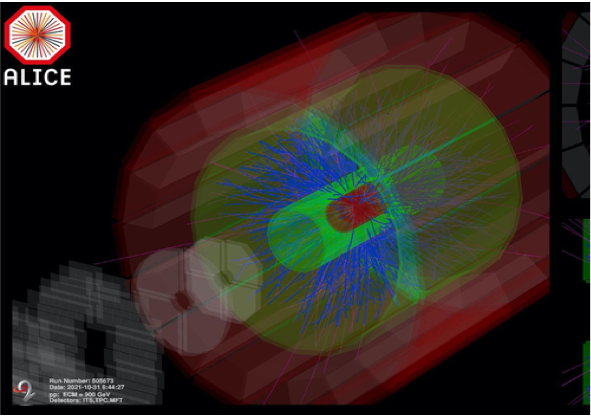
After a span of more than two and half years of intense and challenging activities of upgrading or replacing subdetectors and electronics, as well as of trigger and data-acquisition systems, the huge magnet doors of ALICE are now closed. The detector is getting ready with detector commissioning activities to embark on a new data taking period with beams from the LHC. The LS2 activities had commenced soon after the CERN accelerator complex switched off the beam activities in December 2019. During this span of time, ALICE got a new smaller diameter beampipe, replaced the inner tracking system (ITS) with a new high-resolution, low-material-budget silicon tracker, installed a new muon forward tracker (MFT), upgraded the time projection chamber (TPC) by replacing the multi-wire proportional-chambers with multi-stage gas electron multiplier (GEM) chambers, and installed a new fast interaction trigger (FIT). Additionally, new readout electronics have been installed in the muon spectrometer, time-of-flight (TOF) detector, transition radiation detector (TRD), electromagnetic calorimeter, photon spectrometer and zero-degree calorimeter. An integrated online–offline (O2) computing system is in place, which combines all the computing functionalities needed: detector readout, trigger, event building, data recording, detector calibration, data reconstruction, physics simulation and analysis.
The commissioning stage of the detectors is also quite complex. At first, each subdetector was commissioned individually in standalone mode. The ongoing global commissioning combines all the subdetectors and ensures readiness for data taking. The first tests are with cosmic ray muons, which provides an opportunity to align the tracking systems.
The first pilot beams circulated in the LHC on 19 October 2021. On 26 October, there were low-intensity test collisions at an injection energy of 450 GeV per beam and stable collisions of proton beams were declared on the morning of 27 October. The main goals during the data taking with pilot beam were to verify the performances of the subdetectors and the new O2 systems (dataflow, detector responses, online processing and reconstruction), detector alignment, global calibrations, and the new physics analysis framework for Run3.
